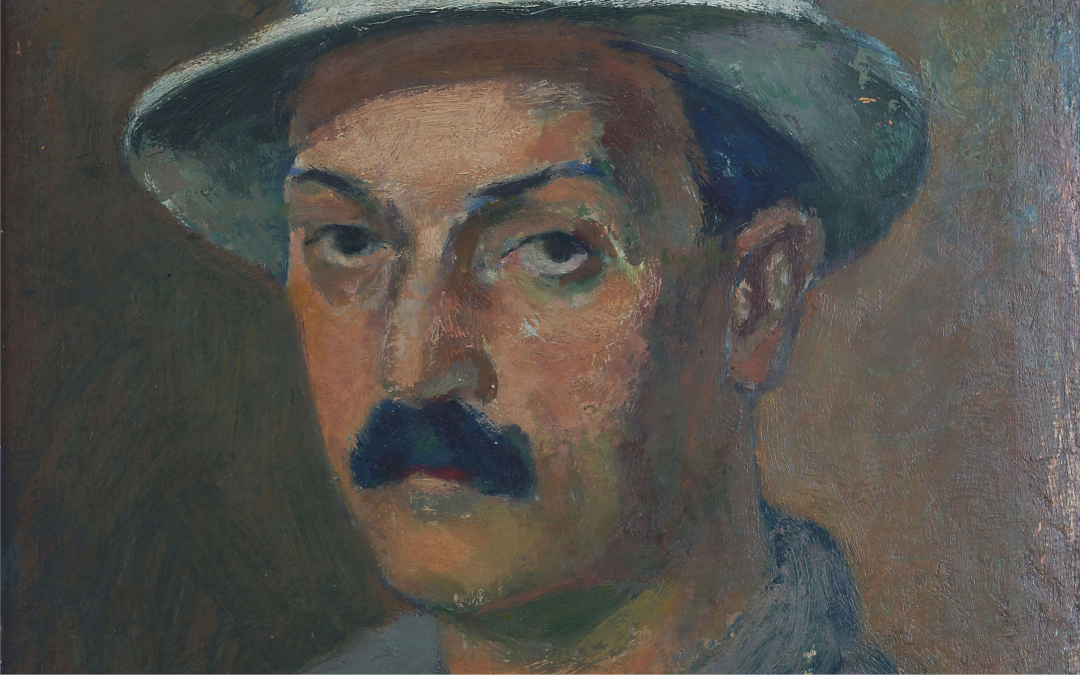Mihailo Petrović was born in Savamala on September 16th, 1902, to father Sreten Petrović, a machinist, and mother Julijana Pergel, Hungarian, who was baptized as Milica after her marriage. After a few years of living in Čubura, he and his family moved to Bratinac, where he finished primary school. As a gifted child who learned to read and write at the age of five, he developed a self-taught love of art that would follow him until the end of his formative years. Although he left high school before passing his matriculation exam, he acquired a good knowledge of German and French, which enabled him to study foreign literature related to art. He entered the Belgrade Art School in 1919, but soon left it, considering the methods of academic education outdated and useless. He tries to continue his education in Vienna, where during a two-month stay he meets the originals of old masters and German expressionists, which will leave a significant impression on him.
Petrov returned home in 1921, clearly inspired by Cleo, Kandinsky and the content of the magazine “Der Sturm”, then he introduced himself to the audience with linocuts in “Zenit”, as one of the most active members of the then first avant-garde magazine in the middle of Yugoslavia, which gathered young creators who aimed at changing the world and people with the help of art. It was there that he signed his name as Petrov for the first time, leaving behind his family name. In 1923, he studied as a scholar at the Academy in Kraków under the professor Jozef Pankiewicz, a well-known Polish Fauvist. As he did not have the means to continue his education, he replaced it with a thorough research of professional literature and movement in artistic circles of “modern thought and free expression”. He belonged to the circle of famous artists, such as Stanislav Vinaver, Todor Manojlović, Dragan Aleksić, Rad Drainac and Tin Ujević, who gathered in the “Moskva” tavern tirelessly discussing, theorizing and devising plans and programs for magazines and art groups.
Seduced by the ideas of modern art, Petrov in those years created an awareness of the importance of the great artistic revolution that took place in the first decade of the twentieth century. From that moment, as a graphic artist, painter and critic, he will follow all movements in the art of his time. Criticism assessed that Petrov “developed violently and in constant rebellion, far from the academies, on the extreme left of our painting”. But after the zenith phase, he returned to conventional themes and forms, left graphics and in the interwar period turned to painting and art criticism. He creates landscapes and portraits that reflect the current atmosphere in fine art, where these themes were the most dominant. In his critical texts, Petrov provided expert analysis of craft and technical challenges in painting, bypassing literary and poetic interpretations of the work of art. However, when he noticed that the criticism, he would write was harsh, out of collegiality, he would tear up the accounts and write them again. In the post-war period, he will cross the road from socially engaged art to abstraction.
From 1940 to 1951 he taught at the Academy of Fine Arts in Belgrade, and from 1951 to 1969 at the Academy of Applied Arts in Belgrade, where he was also the head of the Graphics Department. As the first professor in the field of graphics, he believed that he fought for its equality in “an environment immature for this issue” and that he “pulled it out” from the standard rank of ordinary “printed matter”. In his works, Petrov often emphasized graphics as an area that was underestimated for a long time and was not considered art. Through years of dedicated engagement, he managed to grant it the status of an equal artistic discipline.
Jelena Marković
art historian, volunteer
National Museum Kraljevo
